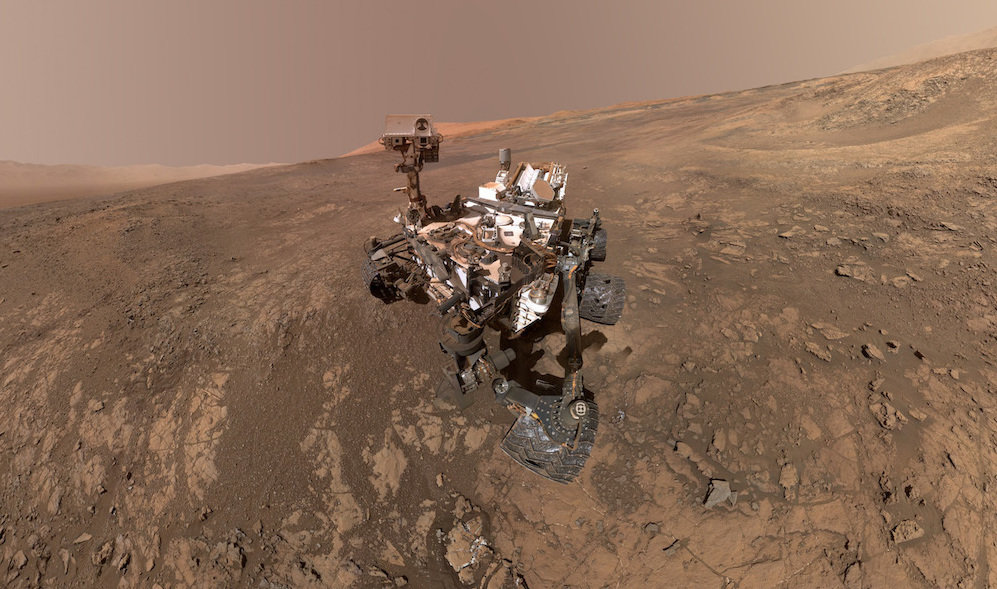 Sunday, February 3, 2019 at 11:39AM
Sunday, February 3, 2019 at 11:39AM Exploring The Mysterious Origins Of Mars' 3-Mile-High Sand Pile
"Mars, may be made largely from dust and sand."
"To get the data for that surprising conclusion, the researchers MacGyvered a navigation instrument on the NASA rover Curiosity, and turned it into a scientific instrument."
"The idea for repurposing the Rover Inertial Measurement Unit came from Kevin Lewis."
"'It kind of frustrated me that we didn't have a surface gravimeter on Mars,' says Lewis, a member of the Curiosity science team, and an assistant professor in earth and planetary sciences at Johns Hopkins University."
"'You can learn a lot about the geology of a planet by measuring subtle changes in its gravity. High-density rocks give a stronger gravity-signal than low-density rocks.'"
"But to make measurements of gravity, you usually need to have an instrument called a gravimeter."
"One day, Lewis started thinking about something that popped up regularly on the rover's daily activity schedule."
"'Turns out, every day we don't drive with the rover, there's this little rover activity called the SAPP-RIMU data activity,' Lewis says."
Reader Comments